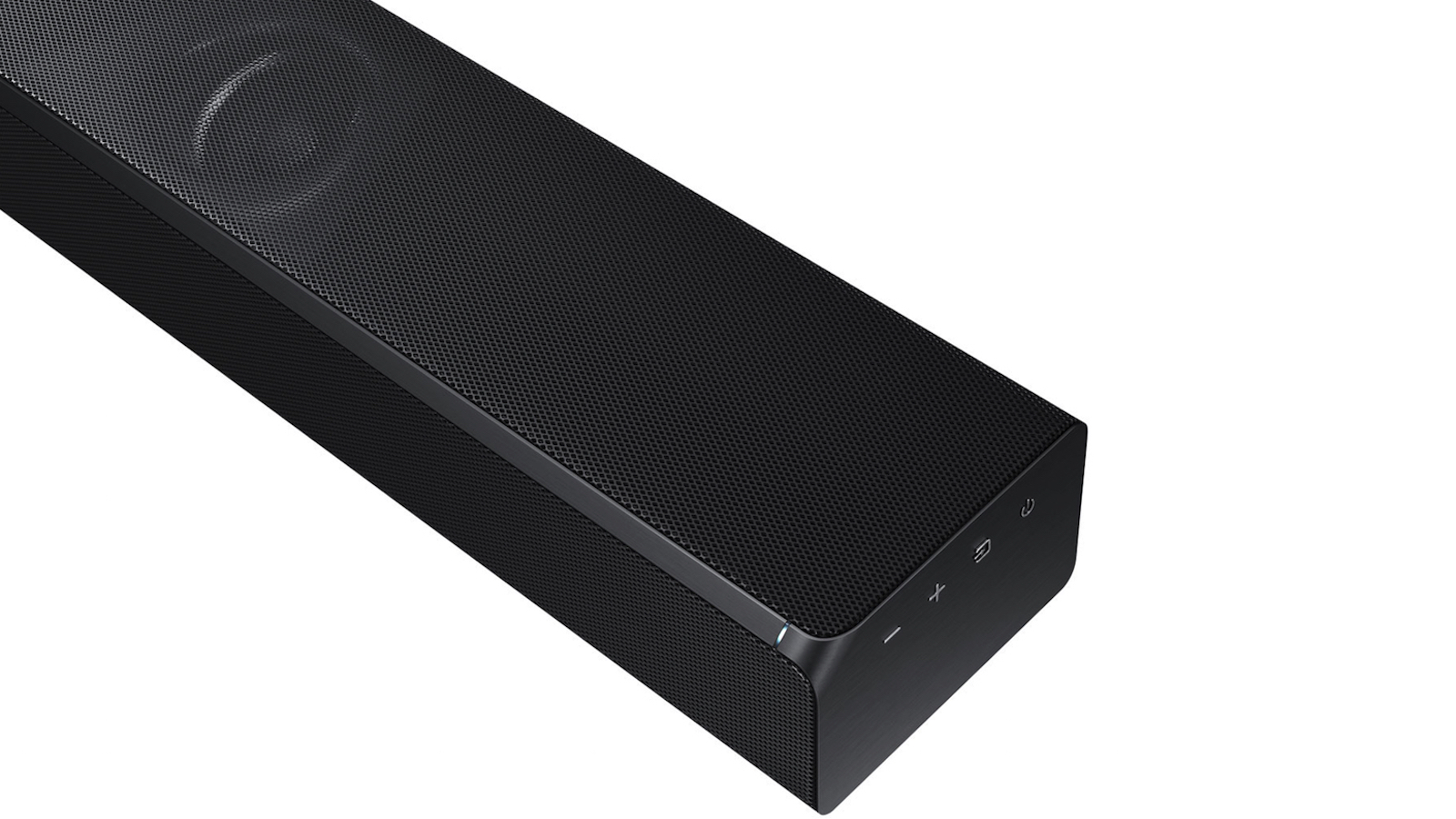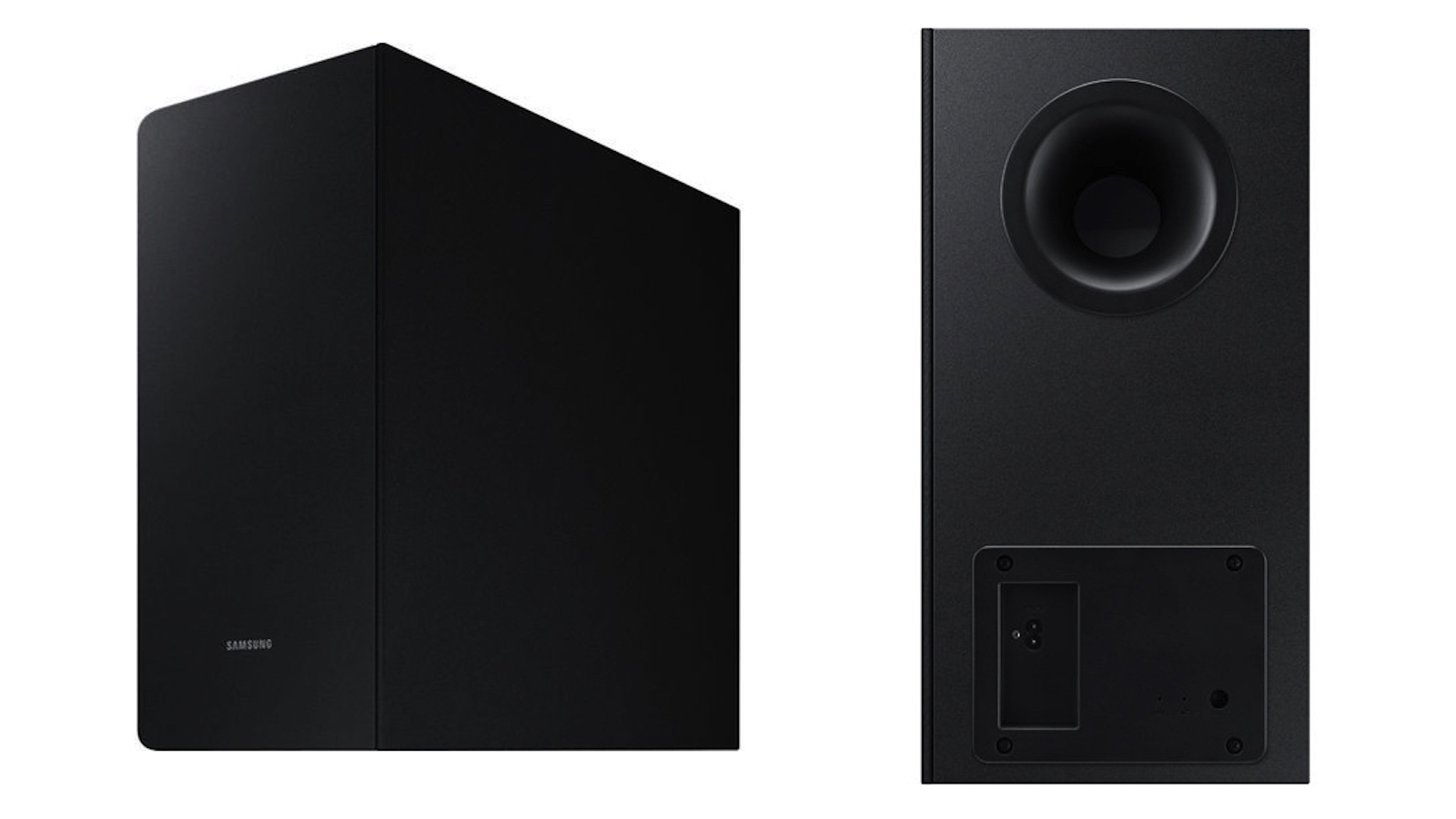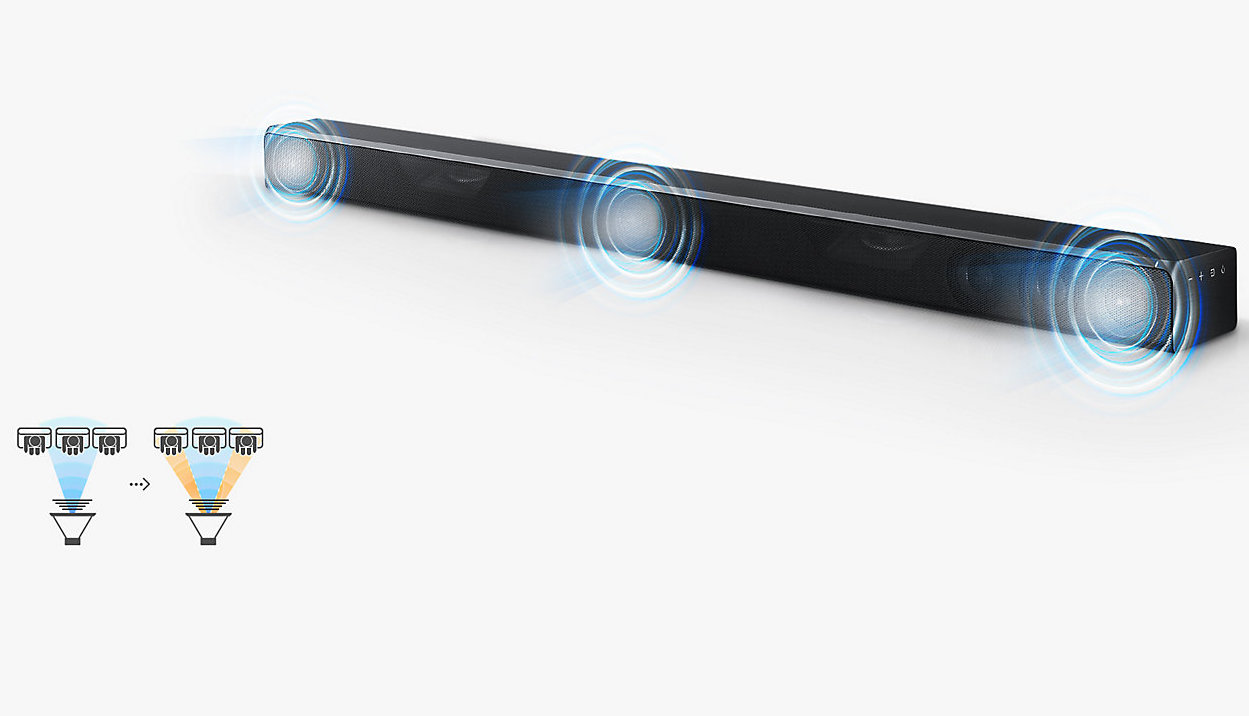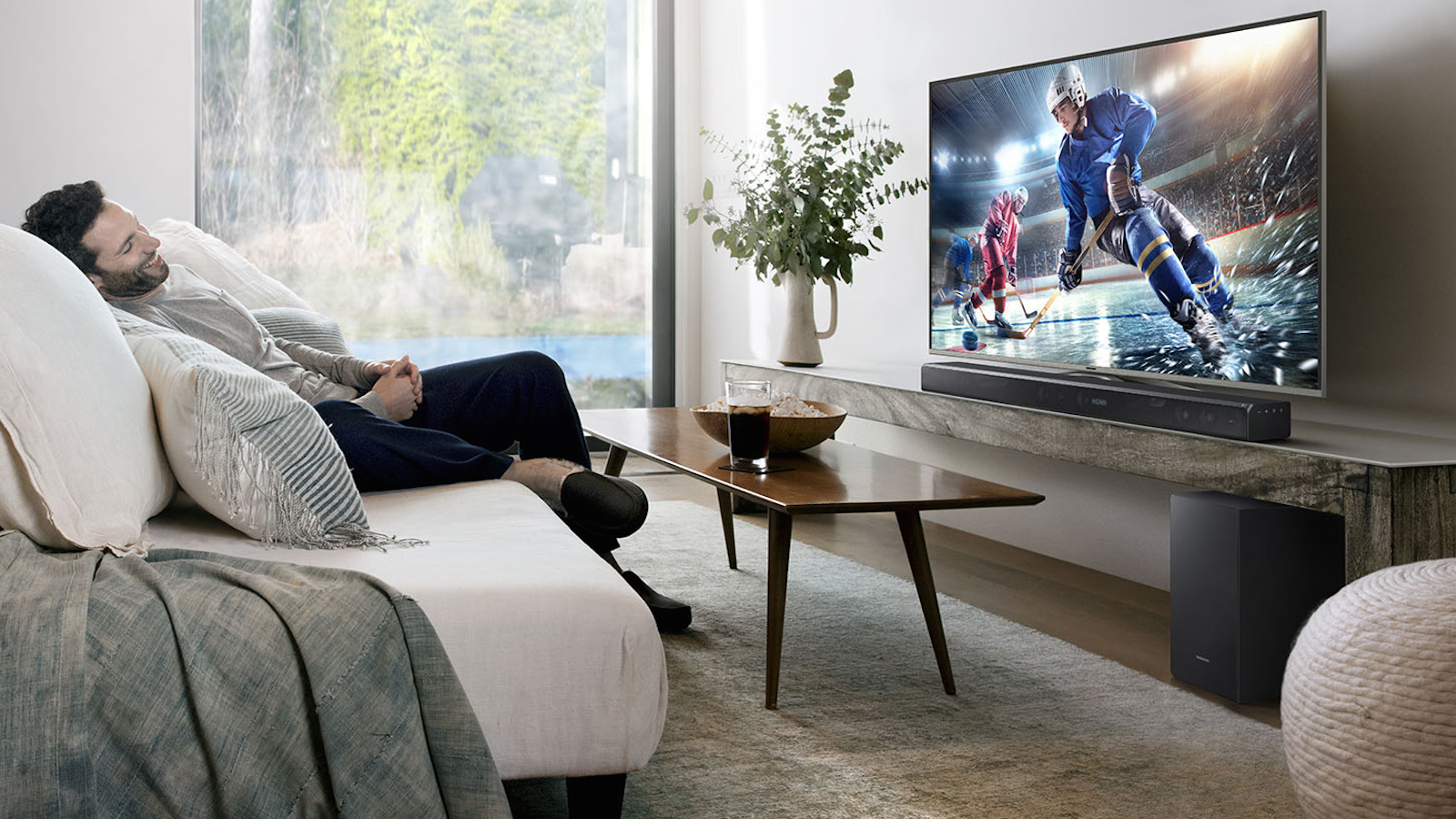TechRadar Verdict
The K850 is one of the most powerful soundbars we’ve heard, and does a brilliant job of delivering both the width and height of sound associated with Dolby Atmos mixes. Its unusually powerful subwoofer ensures there’s no shortage of movie-friendly bass, too. It’s not cheap, however, and the lack of rear speakers clearly impact the Atmos experience.
Pros
- +
Bold, aggressive, wide sound
- +
Compact and attractive design
- +
Powerful subwoofer
- +
Full 4K, HDR passthrough
Cons
- -
No multi-channel DTS support
- -
Still not exactly cheap
- -
No rear channel sound
- -
Needs careful room setup
Why you can trust TechRadar
Dolby has been seriously busy over recent months with an apparent campaign of ‘democratizing’ its home entertainment products.
The recent CES in Las Vegas underlined this by being awash with new conveniently designed and relatively affordable products supporting either the Dolby Vision audio format or the Dolby Vision advanced HDR system.
With those CES debutantes – the H7 and MS750 soundbar – still at least a couple of months away from launch, though, we're happy to report that Samsung has filled the void by sending over one of its HW-K850 Dolby Atmos soundbars.
The K850 is the step-down sibling of the award-winning HW-K950 Soundbar with Dolby Atmos we reviewed - and mostly loved - back in August. At £899 / $899 (around AU$1,200) it costs a whole lot less than the K950, and arguably ups the living room convenience factor by shipping without the rear speakers you get with the K950.
While the reduced price and lost rears may well make the K850 easier for more households to handle, however, the question has to be just how much impact removing the rears has on the K850's audio experience.
Design
We liked the design of the K950, and we mostly like the design of the K850 for the same reasons. In fact, the main soundbar is essentially identical to the one you get with the K950 package, enjoying the same grilled finish, high build quality and surprisingly slim form. The only aesthetic bumnote is the large subwoofer, which is essentially just a chunky black box. Samsung’s design department perhaps figured people could hide the subwoofer away behind a sofa or under a side-table. Especially as it connects wirelessly to the main bar.

The K850 happily carries the same connections as the K950, meaning that it has two HDMI inputs and one HDMI output that support the video world’s latest HDCP 2.2 anti-piracy protocols, as well as 4K pictures at 60 frames a second and high dynamic range image data. The HDMI output supports audio return channel (ARC) functionality, too.
Non-HDMI audio options comprise an optical digital audio input and a 3.5mm ‘minijack’ input. In an ideal world one more HDMI input would have been nice and, perhaps, stereo RCA inputs.
The K850 does join the K950, though, in providing both Bluetooth audio playback (with iOS and Android support) and wireless network connectivity.
Dimensions: Soundbar - 1210.2 x 81.7 x 131.4mm, Subwoofer - 203.9 x 399 x 414.3mm (W x H x D) | Speaker configuration: 3.1.2 | Claimed audio power: 360W | Connections: Two HDMIs, one optical audio input, 3.5mm audio port, Bluetooth, wi-fi network
Design TL;DR: The soundbar is a thing of robust beauty considering how many speakers and how much power it holds. The subwoofer is a bit dumpy by comparison, but its wireless connectivity makes it relatively easy to hide away.
Features
The K850’s headline features are its decoding and playback of Dolby Atmos sound across a 3.1.2 speaker arrangement with 360W of power.
Also significant, though, is the way it can be integrated into a wider home network of Samsung wireless speakers. In fact, the system allows you to deploy a pair of wireless Samsung speakers for rear channel duties. Bear in mind, though, that neither the Samsung R3 nor R7 speakers most likely to be used in such a set up carry upward-firing speakers, so they won’t give you any sense of the rear height effect associated with a full Atmos experience. The up-firing rear speakers you get with the K950 aren’t available as optional extras for the K850.
The K850’s wi-fi networking lets you stream content from DLNA servers as well as providing support for the Spotify, TIDAL, Deezer, Qobuz, Napster, 8Tracks, JUKE, 7digital and Murfie online audio platforms.
When it comes to audio formats, as well as Dolby Atmos there’s Dolby True HD and Dolby Digital Plus support on the movie side, and ALAC, FLAC, OGG, WMA, WAV, MP3, AAC on the music side. This list includes, you may have noticed, high-res audio formats. The ability of the HDMIs to support HDCP 2.2, HDR and 4K at up to 60fps is a key finding that precious few current soundbars support.

The K850 does, though, share one significant feature limitation with its K950 sibling: no serious DTS support. Play a DTS multi-channel audio track into the K850 and all you’ll get is stereo. Or, if you use the K850 remote’s prosaically named ‘Sound’ button, an expanded sound created from the stereo source through audio processing. Neither of which can be considered a satisfying replacement for the true multi-channel clarity and immersiveness of a proper Dolby multi-channel mix.
To give you a sense of perspective on this, a quick head count of my Blu-ray collection reveals that at least two-thirds of have DTS rather than Dolby mixes. With Ultra HD Blu-rays the situation is different; currently only a handful of titles use DTS-X mixes rather than Dolby Digital or Dolby Atmos mixes. But the number is growing, with Universal in particular showing an increasing fondness for DTS-X mixes.
Fortunately, if you’re not happy with the idea of only getting the benefit from all the K850’s speakers with some of your movie collection, there is a solution of sorts. Which is to partner it with a Blu-ray/Ultra HD Blu-ray player that carries the facility to convert DTS mixes to Dolby Digital ones.

This is a faff, though, since you’ll have to remember to keep changing the audio setting in your Blu-ray/Ultra HD Blu-ray player depending on the sound format of the film you’re watching. Also, relatively few players actually support DTS to Dolby Digital conversion. Fortunately for Samsung, most of its own Blu-ray players over the past couple of years plus its K8500 Ultra HD Blu-ray player do support DTS to Dolby Digital conversion. But this means you’re pretty much forced to go the Samsung Blu-ray/UHD BD route if you don’t want to experience a total mismatch with the K850 between Dolby and DTS soundtracks.
Features TL;DR: The main soundbar has plenty going on with its expansive speaker array and up-to-the-minute connectivity. The lack of DTS support needs a bit of working round, though.
Performance
The K850’s sound performance instantly reminded us of why we liked the K950 so much. Its soundbar explodes into life with action movie scenes, ripping up the air in your room with a fantastic combination of power, aggressive attack plus huge bass extensions courtesy of that meaty subwoofer.
Effects and sound transitions whizz around your room with great clarity and positional precision, from left to right, right to left and, crucially for a Dolby Atmos soundbar, up and down. The sense of height with all the Dolby Atmos mixes we tried was palpable and impressively delineated - by which we mean there were times when we could discern multiple height layers in the vertical effects. Just bear in mind that for the height channel to work effectively, you’ll really need to be placing the soundbar in a room with a flat rather than vaulted or beamed ceiling.
The scale of the K850’s soundstage is exceptional, creating a wall of sound capable of filling large, high rooms much more successfully than you tend to get from many rival soundbars.
Voices are another highlight of the K850’s performance. They always sound clear no matter how much racket is going on behind them, yet the clarity never sounds forced; the people speaking always sound like a natural part of their on-screen environment.

There’s no hint of distortion, crackle or speaker drop out even when you push the K850 way harder than your ears will be comfortable with, and provided you are (very) careful with the subwoofer’s settings, bass hangs on fairly tightly to the lower end of the mid-range delivered by the soundbar.
It should be said that some sound enthusiasts - especially those with a more traditional hi-fi background - might find the K850 sound a touch too brash and full-on for their tastes. Personally, though, we found the K850’s boldness well suited to the typically robust movie soundtracks we usually gravitate towards.
The K850 also handily manages to adopt a slightly more refined tone for music, ensuring that while it might just be a touch clinical for some tastes, the aggression that serves it well for movies doesn’t colour your music. In fact, aside from lacking a CD player, the K850 makes a seriously effective replacement for a typical living room hi-fi.
The only real issue we have with the K850’s performance (aside from the DTS limitations noted in the Feature section) is that we really missed having rear speakers. While there’s no doubting the quality and scale of the K850’s front soundstage, you never get a sense of anything going on behind you. And when you’re talking about a sound format as detailed and immersive as Dolby Atmos, this rear void of sound is tough to ignore.
We particularly missed the ‘sphere of sound’ effect you get with Atmos when you’ve got rear height channels married up with front height channels. To be fair, though, we’d generally rather have a soundbar that sticks with clean front channel playback rather than trying (and failing) to deliver a pseudo-surround sound effect via processing. But the front-only experience doesn’t quite feel like a full-blooded Atmos effect. For this reason we can’t quite rave about the K850’s performance as much as we did about the K950’s.
Performance TL;DR: It’s impressive by any measure, but it isn’t as ground-breakingly brilliant as its full-surround sibling.
John has been writing about home entertainment technology for more than two decades - an especially impressive feat considering he still claims to only be 35 years old (yeah, right). In that time he’s reviewed hundreds if not thousands of TVs, projectors and speakers, and spent frankly far too long sitting by himself in a dark room.

